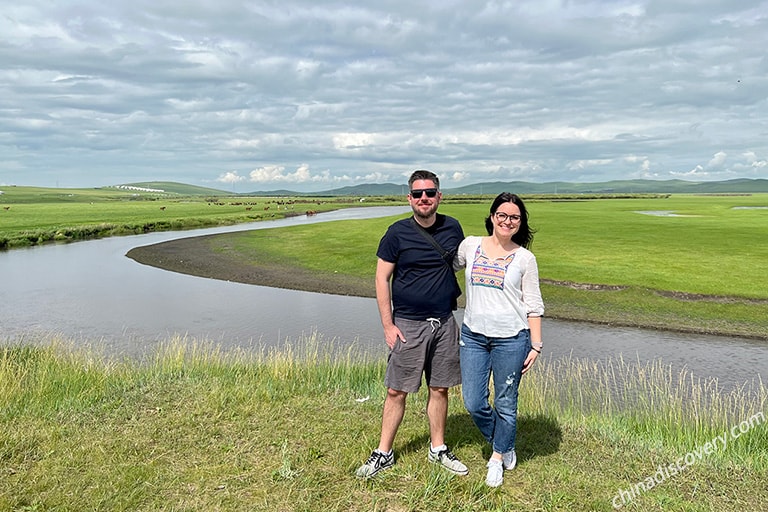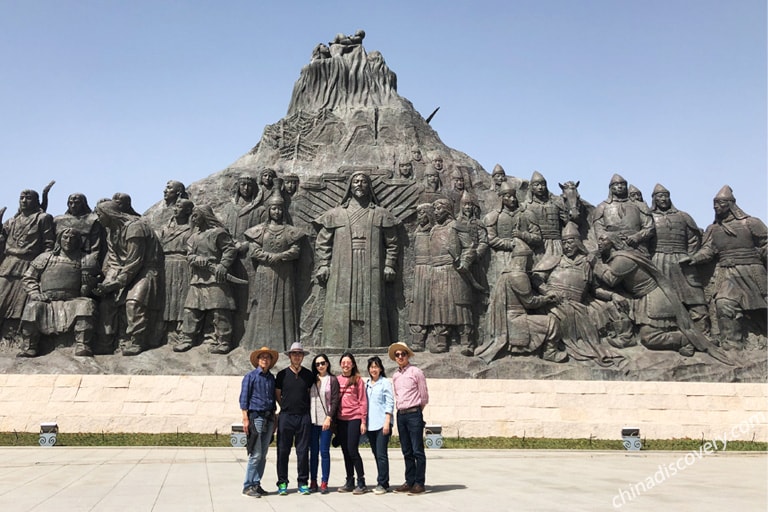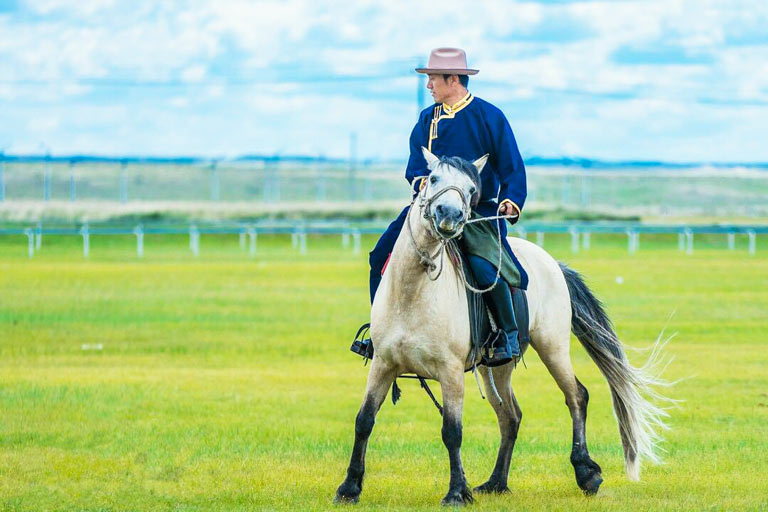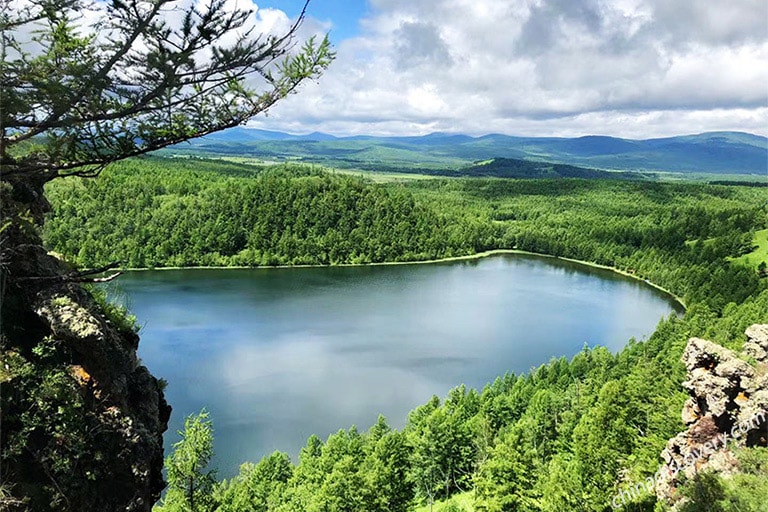Inner Mongolia Food, Snacks & Cuisines | Inner Mongolia Food Tour 2025/2026
"Fill your gold and silver cups; Raise your hands over your head; Fried rice, milk tea, pickled meat, glut yourself with delicacies!" A toasting song is the most accurate summary of Mongolian food culture! Take a look at Inner Mongolia's top 12 special foods, cuisines and snacks. Just the first one will make your mouth water!
Table of Contents
• Chinese:手扒肉 Pinyin: shǒu pá ròu
• Type: Mongolian Food, Boiled Mutton
• Best at: Grasslands in Inner Mongolia >>
The traditional Mongolian food can be divided into white food and red food: white food refers to dairy and red food refers to meat. Braised meat is a kind of red food, Mongolian called "Ulanyi". Braised meat is cooked using the original juice of the meat, splitting the bone-in lamb at the bone joints, putting it in a large pot without adding salt and other condiments.
When eating, diners can use one hand to grab the lamb bone and the other hand to take the Mongolian knife to pick off the lamb, then dip it in the prepared sauce to eat. According to the herdsmen's habit, this dish is usually served for dinner.
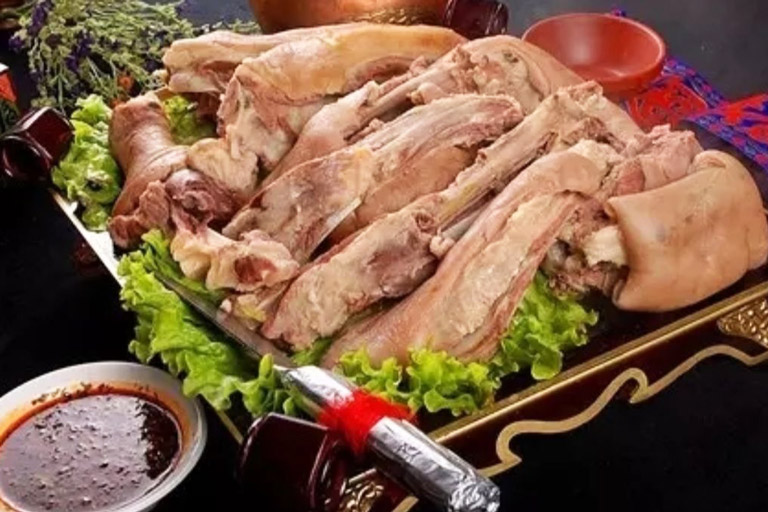
Hand Grilled Meat with Special Sauce ©jingyan.baidu.com

Hand Grilled Meat ©dianping
• Chinese: 烤全羊 Pinyin: kǎo quán yáng
• Type: Mongolian Food, Roasted Lamb
• Best at: Grasslands in Inner Mongolia >>
Roasted Whole Lamb is a traditional meat dish with the local flavor of Mongolian people's diet. It is a big dish with the most ethnic characteristics. It is a traditional delicacy formed in nomadic life for thousands of years and a traditional dish for Mongolian guests.
Roast whole sheep generally choose plump and sturdy four-teeth three-year old sheep as raw materials. After slaughter, a variety of spices are placed in the rib cage of the sheep. Then, the limbs are hung four legs up and the back down with the iron chain. The lambs will be baked in the oven until the whole body is brown. After roasting, get the lamb out first and pour out the lamb soup and ingredients. Then place the whole sheep in a kneeling position into a plate about 1 meter in diameter. On the table, the sheep will be cut into small pieces in front of the guests by a specially-assigned person and served according to the guest status.

Roast Whole Lamb ©纳兰小鱼 / weibo

Roast Leg of Lamb ©dianping
• Chinese: 羊杂碎 Pinyin: yáng zá suì
• Type: Snack, Street Food, Lamb Sweetbread
• Best at: local famous diners in Hohhot Downtown
Mongolian Haslet occupies the supreme position among snacks in Inner Mongolia. It is fastidious about "three materials", "three soups" and "three condiments". Three materials are divided into three main materials and three side materials. The three main materials are the heart, liver and lung, also known as the "three reds"; Three side materials are tripe, intestines, head and foot meat, also known as "three white".
Three tastes is very simple to say. These three flavors are displayed on the table of the restaurant specializing in Mongolian Haslet: verdant cilantro, burning red pepper powder and crystal white salt. Diners can adjust the mixture according to their own taste.

Lamb Haslet Light Soup in the Copper ©dianping

Lamb Haslet Red Soup ©dianping
• Chinese:稍美,烧麦 Pinyin: shāo mài
• Type: Staple, Minced Mutton enfolded with Thin Crust
• Best at: downtown areas of Hohhot and Bayannur
Shaomai is a traditional food that has been passed down for a long time in Hohhot. As early as the Qing Dynasty, Shaomai became famous in the capital. At that time, on the signboard hanging in front of the Shaomai diners, often marked with the words "Authentic Shaomai from Guihua City (nowadays Hohhot City)" in the Qianmen area of the imperial capital Beijing.
When foreign guests come to Hohhot, almost everyone will try this delicious cuisine. The cooking method of Shaomai is unique and the material is excellent. The wrapper of Shaomai is fine and thin, the minced mutton filling is medium, and the seasonings such as spring onion and ginger, etc. are complete. Put the wrapped Shaomai in a bamboo cage on the upper layer of the steamer. When lifting the lid, the fragrance of Shaomai is overflowing. Viewing its shape, you can see the wrapper is as thin as cicadas’ wings, glittering and translucent. Lifted with chopsticks, it looks like a hanging bag, placed on the plate, it shaped like a meat pie. Shaomai tastes delicious but not greasy. It's a good meal in China with a beautiful shape and an unforgettable taste. Shaomai used to be used for breakfast, and served in teahouses. Today, it has become a staple food in many restaurants and a common meal at home. Hohhot and Bayannur are two top cities to enjoy delicious Shaomai.

Fresh Steamed Shaomai in a Bamboo Steamer ©sohu

Make Delicious Shaomai ©安琪酵母烘焙之家 / Sohu
• Chinese: 扒驼掌 Pinyin: pá tuó zhǎng
• Type: Specialty Dishes
Camels are mainly raised in the desert grasslands of Inner Mongolia. They are tall and muscular. Four hoofs are the most active tissue in the camel body, so its meat is very delicate and elastic, fat but not greasy. Camel's hoofs are rich in nutrition and have long been known as bear paws, cubiloses and hericiums. The camel's hoof is one of the "Eight Treasures in the North" used in ancient imperial meals. If you are planning to travel to Ejin Banner (Ejina Populus Euphratica Forest, Badain Jaran Desert...), do remember to add this special food to your must try list.

Braised Camel Hoof with Broccoli ©maigoo

Xue Shan Tuo Zhang (雪山驼掌) ©君君电影院163 / sohu
• Chinese:奶皮子 Pinyin: nǎi pí zǐ
• Type: Snacks; Dairy Product
The vrum is called "Chaganyide" in Mongolian, which means "white food" in Chinese. The fresh milk of horse, sheep, cow and camel is poured into the pot and cooked in a slow fire. Waiting for a layer of wax fat is condensed on its surface, use the chopsticks to pick the layer up and hang in a ventilated place to dry. The vrum is the essence of fresh milk, star of dairy products, and has high nutrition value. The process of making vrums is simple, but there are many ingredients added to it. The vrum is tasty, mellow and nutritious. Served with milk tea, milk snack and millet stir-fried in butter, the vrum was once known as "the best of all foods". Whether for home dining, banqueting guests, or worshiping ancestors god, the vrum is indispensable.

Vrum ©营养食谱大全 / sohu

The Process of Making Vrums ©nmgnews
• Chinese: 奶酪 Pinyin: nǎi lào
• Type: Dairy; Snack
Inner Mongolia, with its vast grasslands, is one of the largest dairy province in China. It is best known for its cheese snack. Inner Mongolia Cheese is divided into two types, one is raw cheese, the other is cooked cheese.
Inner Mongolia Cheese, figuratively known as "cheese egg". The practice is to separate the ghee in the yogurt first. After a small fire boiling, put the mushy yogurt into a cloth bag, squeeze out the sour water. Then, take the milk residue out of the cloth bag, put it into a mold or wooden dish and press it into shape. Finally, leave the cheese in the sun or in a ventilated area to harden and dry.

Mongolian Traditional Cheese ©食尚达人 / sohu

"Cheese Egg" ©1688
• Chinese: 羊肉松 Pinyin: yáng ròu sōng
• Type: Local Snack; Complementary
Dried Lamb Floss is a unique snack in Hulunbuir. Remove the fat and skin from the fresh mutton, cut it into pieces; rinse, boil and rub it into shred; finally, fry dry, cool it down. Sheep in Hulunbuir are characterized by high protein, low fat, high rate of lean meat, tender taste and no odor, so they are perfect raw material to make dried meat floss. Lamb Floss can be eaten as it is, or as an accompaniment to meatloaf or bibimbap.

Mixed Rice with Dried Lamb Floss ©sohu

Dried Lamb Floss ©团仔聊美食 / baijiahao.baidu
• Chinese: 风干牛肉 Pinyin: fēng gān niú ròu
• Type: Local Snack
Air-dried Beef Jerky, also known as Inner Mongolia beef jerky, is a special snack of Xilingol League, well known as “Genghis Khan's Army Rations”. More than 800 years ago, Genghis Khan, the great leader of Mongol nobles, took air-dried beef as the army ration in order to reduce the load of his troops on his expedition to the west. The dried beef is portable and retains all the nutrients it contains. Beef jerky in Xilingol League choose high quality and pollution-free fresh beef from the prairie as raw material, combining traditional Mongolian practices with modern advanced technology. The taste is unique and memorable.

Air-dried Beef Jerky ©dougouo

Air-dried Beef Jerky ©new.qq
• Chinese: 哈达饼 Pinyin: hǎ dá bǐng
• Local Snack; Dessert
Hada Flaky Pastry is a famous traditional snack in Chifeng, Inner Mongolia. It is a dessert-type snack. The pastry is made of water and oil, and the fillings are dried fruit, sesame seeds, walnuts, red bean paste, etc. The crust is so crispy that it melts in your mouth. The filling has both the aroma of dried fruit and the sweetness of bean paste.

Sunflower-shaped Hada Flaky Pastry ©成吉思汗陵网络服务平台 / sohu

Hada Flaky Pastry (哈达饼) ©gusuwang
• Chinese: 奶茶 Pinyin: nǎi chá
• Type: Drinks, Salty Milk Tea
What do Mongolians value most in their diet? It can't be without tea. If a local family has guests visiting, the hospitable host would first serve fragrant milk tea to show his sincere welcome.
Mongolia Tea, being the Mongolian's special daily drink, it embodies rich milk-tea culture. Different from hand-brewed bubble tea, which is popular among young people nowadays. Mongolians use iron pans to brew salty milk tea. Firstly, pound full dose of tea leaves from the cyan bricktea or black bricktea with a knife and bring them to a boil in a thermal pot. Then fish the tea leaves out with a yarn bag and pour the tea into the bucket. Stir-fry the millet until fragrant, then pour the boiled tea and fresh milk into the pot, add a small amount of salt, repeated stir with the ladle. After the tea and mile full blended, it is ready to serve.

Mongolian Milk Tea ©mafengwo

Mongolian Milk Tea with Local Snacks ©new.qq
• 蒙古酒 Pinyin: měng gǔ jiǔ
• Type: Drink; Alcoholic Beverage
Mongolian Wine is one of the main beverages of the Mongolian people. It is extracted from milk, therefore called “The Milk Wine". Mongolian Wine is thick and mellow, colorless and transparent, drinking moderately can keep health and invigorate the blood. Men, women, young and old all can drink it.
The Mongolian Milk Wine has a long history. According to the historical record, Genghis Khan drank the wine on every auspicious day to add to the festive atmosphere since 1206 A.D., the founding of the Empire of Mongolia. More than 700 years later, the original process of producing Mongolian wine has never changed.

Mongolian Wine Toast ©京迹行天下&疯度 / mafengwo

Mongolian Wine ©weibo
Where to eat the famous Inner Mongolia food that mentioned above and where can you buy authentic local snacks? First of all, if you come to Inner Mongolia for the first time, the roast lamb must not be missed. Almost all the famous grasslands in Inner Mongolia have places to enjoy the lamb feast.
If you prefer to try some other local dishes or snacks, the food streets in urban areas of major cities in Inner Mongolia offer you a massive gathering of local cuisines. Among various food streets in Hohhot, Niujie Street and Kuanxiangzi Food Street are the two most popular ones, gathering all kinds of local specialties, halal food, and time-honored restaurants and food stores. Besides, if you are planning to visit Hulunbuir and Manzhouli, don’t miss the Manzhouli China-Mongolia-Russia Food Street and Hulunbuir Ancient City Pedestrian.
Hohhot Niu Jie 呼和浩特牛街
▶ Location: Xinhua West Street, Huimin District, Hohhot City 呼和浩特市回民区新华西街
Hohhot Kuanxiangzi Food Street 呼和浩特宽巷子美食街
▶ Location: Location: Kuanxiangzi, Huimin District, Hohhot City 呼和浩特市回民区宽巷子
Hulunbuir Ancient City Pedestrian 呼伦贝尔古城步行街
▶ Location: Zhengyang Street, Hailar District, Hulunbuir City 呼伦贝尔市海拉尔区正阳街
Manzhouli China-Mongolia-Russia Food Street 满洲里中俄蒙美食街
▶ Location: No.6 Huabu Street, Manzhouli City, Hulunbuir City 呼伦贝尔市满洲里市华埠大街6号
Baotou Hengshu Street 包头横竖街
▶ Location: Hengshu Street, Jiuyuan District, Baotou City 包头市九原区横竖街
Chifeng Quanning Street 赤峰全宁街
▶ Location: Quanning Street, Songshan District, Chifeng City 赤峰市松山区全宁街

Hohhot Kuanxiangzi Food Street ©觅友旅行 / k.sina

Hulunbuir Ancient City Pedestrian ©mafengwo
Chinese Food Culture
Nourished by the five thousand years’ history and multiple nations and regions in the vast land, China’s food culture is more than what words can describe. Rooted in traditional Chinese philosophy, like Yin-Yang and Five Element and Confucianism, Chinese cuisine is beyond the food itself but an artwork of the creative minds. Under the guidance of Traditional Chinese Medicine, most of the Chinese cuisines are healthy and nutritious, pursuing to maintain people’s health, and even help the patients get healed.
Are you wondering about Chinese cooking process? Is that hard? around 100 cooking techniques have been formed over the development of Chinese food culture. The diverse cooking techniques show the wisdom of Chinese people and also help a lot on the sustainable development and reformation of the Chinese cuisines.
To enjoy the authentic Chinese flavour in a right way, Chinese dining etiquette plays a rather important role in Chinese food culture. Getting to know the Chinese etiquette will not only show one’s good self-cultivation and manners, but also help your understand the culture deeply and avoid making taboos accidentally to behave offensively to your Chinese host.
More about Inner Mongolia Travel Guide
- Top Cities & Destinations
- Hot Attractions
- Things to Do
- Famous Grasslands
- Top Deserts
- Transportation
- Weather & Best Time
- Inner Mongolia Summer
- Inner Mongolia Autumn
- Inner Mongolia Winter
- Hotels & Where to Stay
- Maps
- Photos & Landscpaes
- Travel Tips
- Naadam Festival
- Horse Riding
- Mongolian Yurts
- Inner Mongolia Tour Plan
Inner Mongolia Cities' Travel Guides & Tours
- Hohhot Travel Guide
- Hohhot Tours
- Hulunbuir Travel Guide
- Hohhot Tours
- Badain Jaran Tours
- Ejina Travel Guide
- Ejina Tours
- Baotou Travel Guide
- Baotou Tours
- Ordos Travel Guide
- Ordos Tours
- Chifeng Tours
- Xilingol Tours
- Ulanqab Tours
- Bayannur Travel Guide
- Inner Mongolia Travel Guide
- Popular Inner Mongolia Tours
Hottest Attractions in Inner Mongolia
- Hulunbuir Grassland
- Badain Jaran Desert
- Huitengxile Grassland
- Inner Mongolia Museum
- Kubuqi Desert
- Xilamuren Grassland
- Mausoleum of Genghis Khan
- Arxan National Forest Park
- Ergun Wetland
- Dazhao Temple
- Wudangzhao Lamasery
- Ejina Populus Euphratica Forest
- Ulan Butong Grassland
- Xilingol Grassland
- Tengger Desert
- Site of Xanadu
- Wulanhada Volcano Geopark
- Hulun Lake
- Gegentala Grassland
Start planning your tailor-made holiday to China by contacting one of our specialists. Once inquired, you’ll get a response within 0.5~23.5 hours.
Customize a TripHave a question? Get answers from our travel experts or guests
- Your Question:
- Your Name:
- Your Email:
- Submit
- Affordable and valuable price
- 100% tailor-made packages
- Highly rated customers reviews
- Efficient customer support































